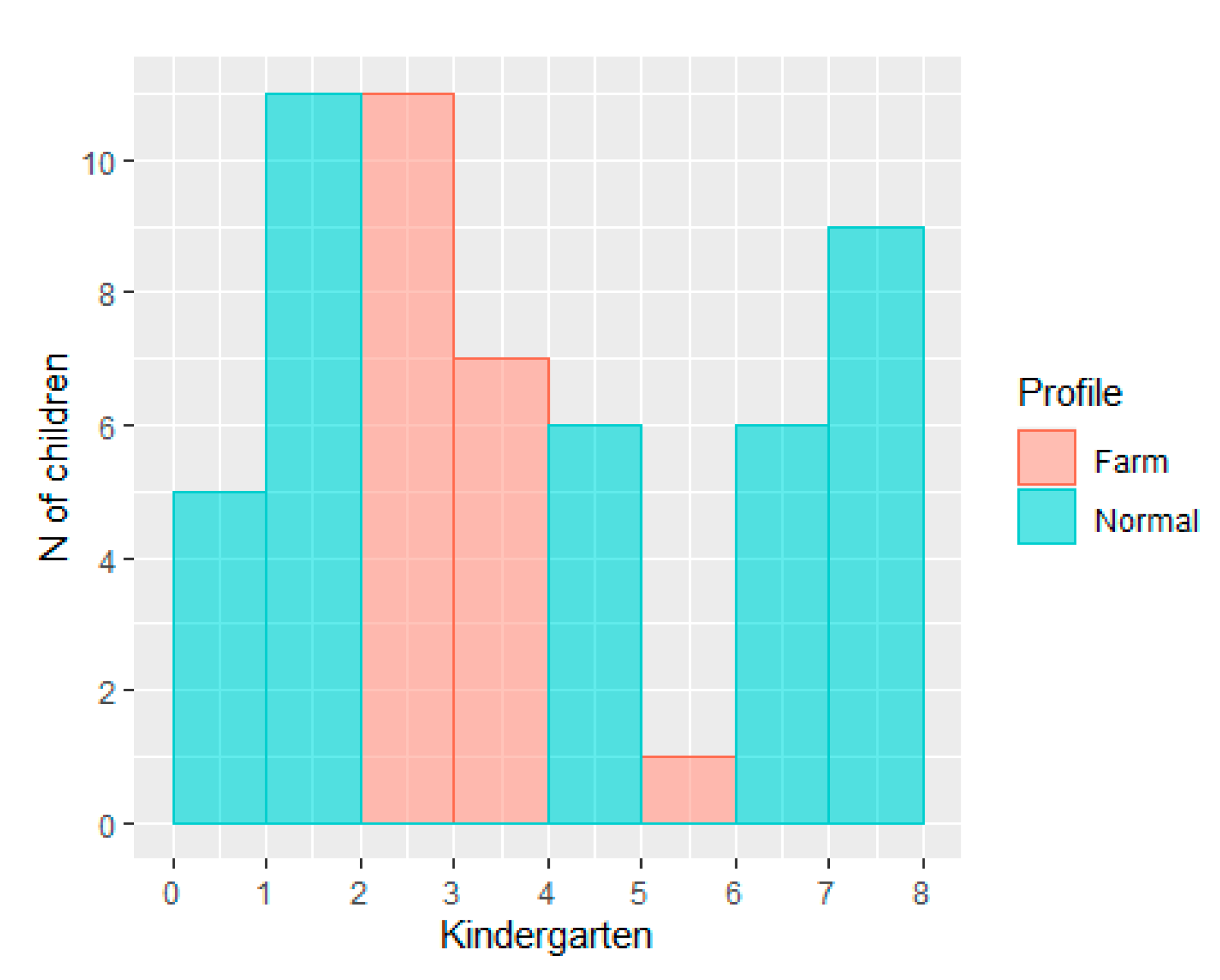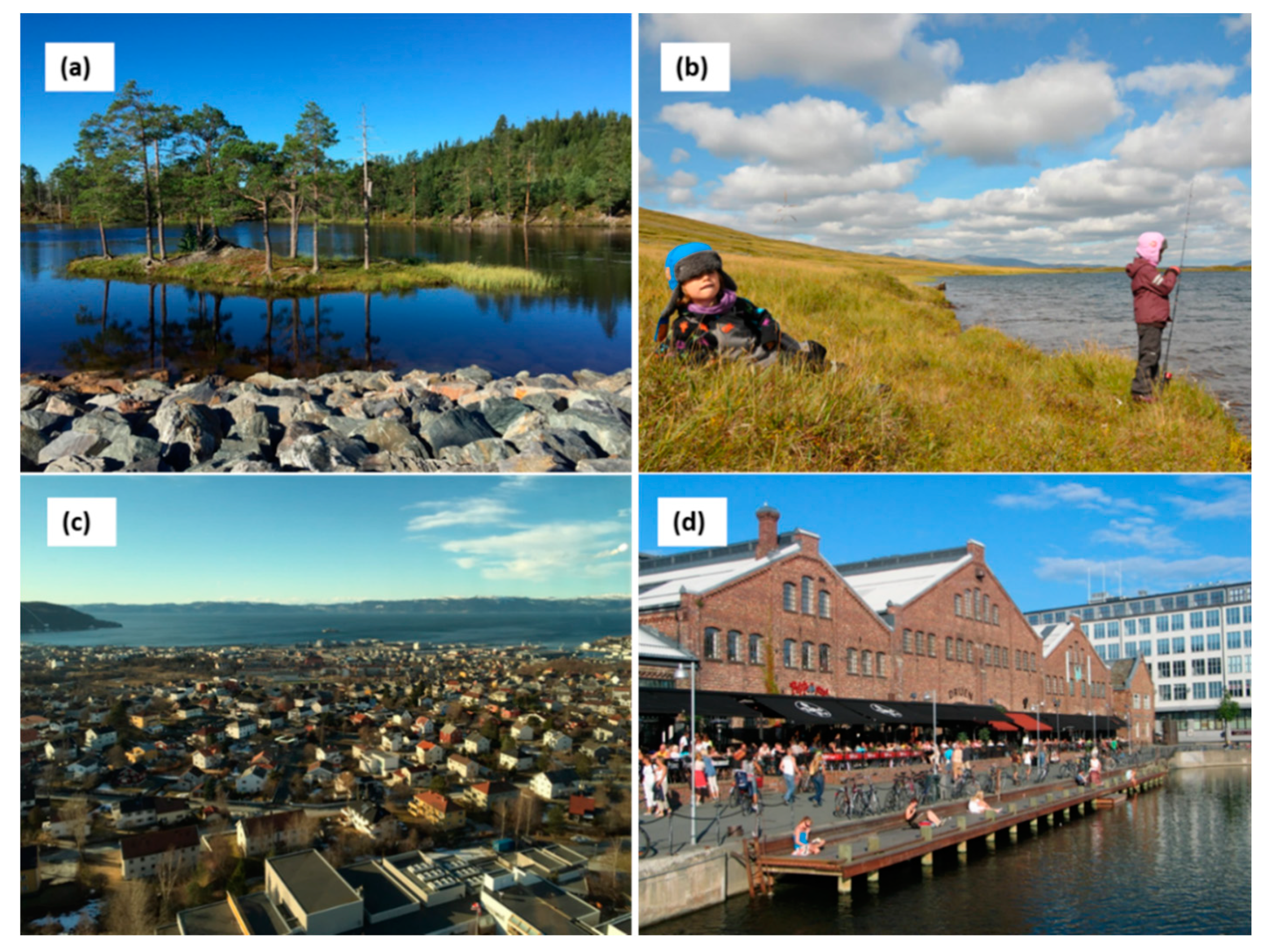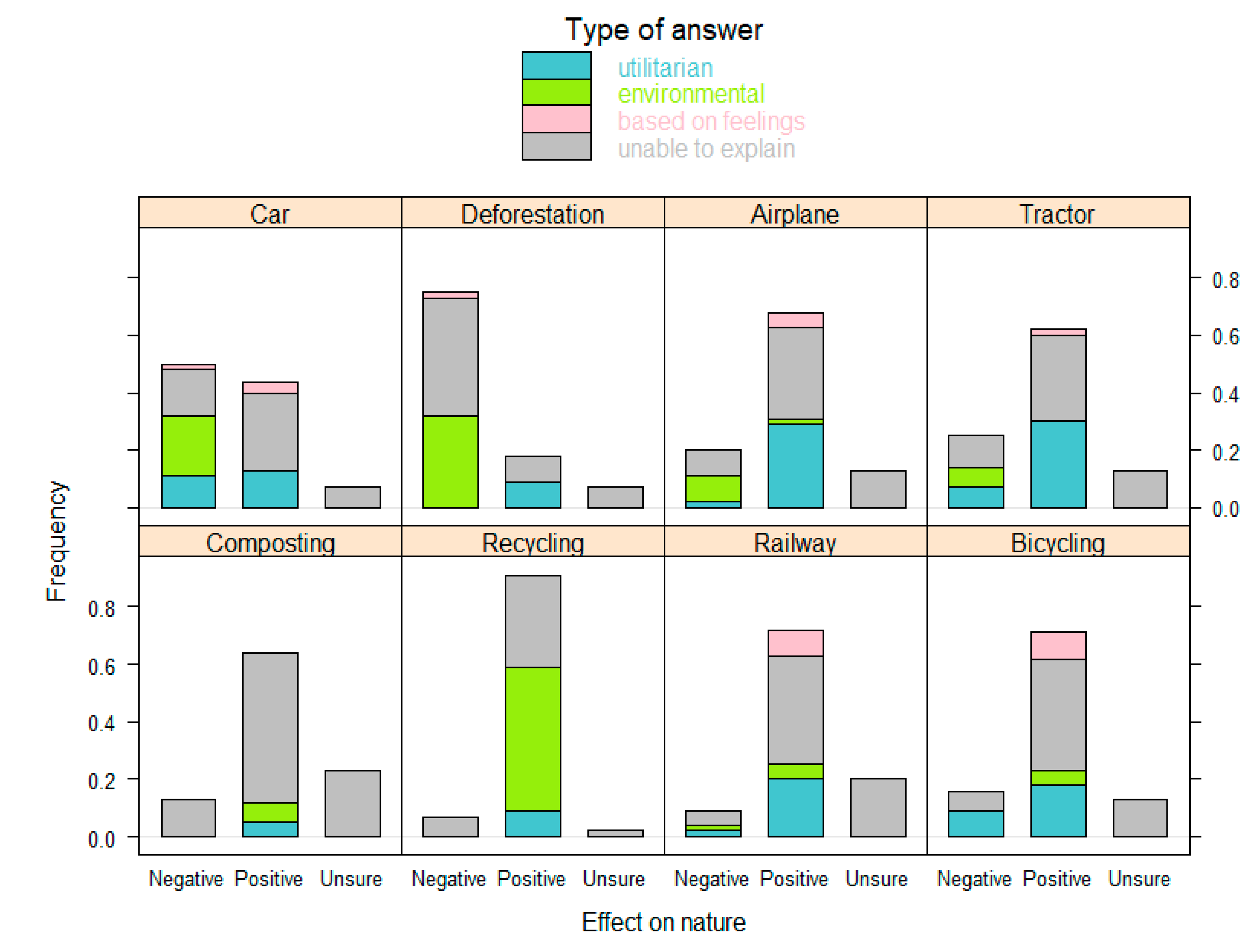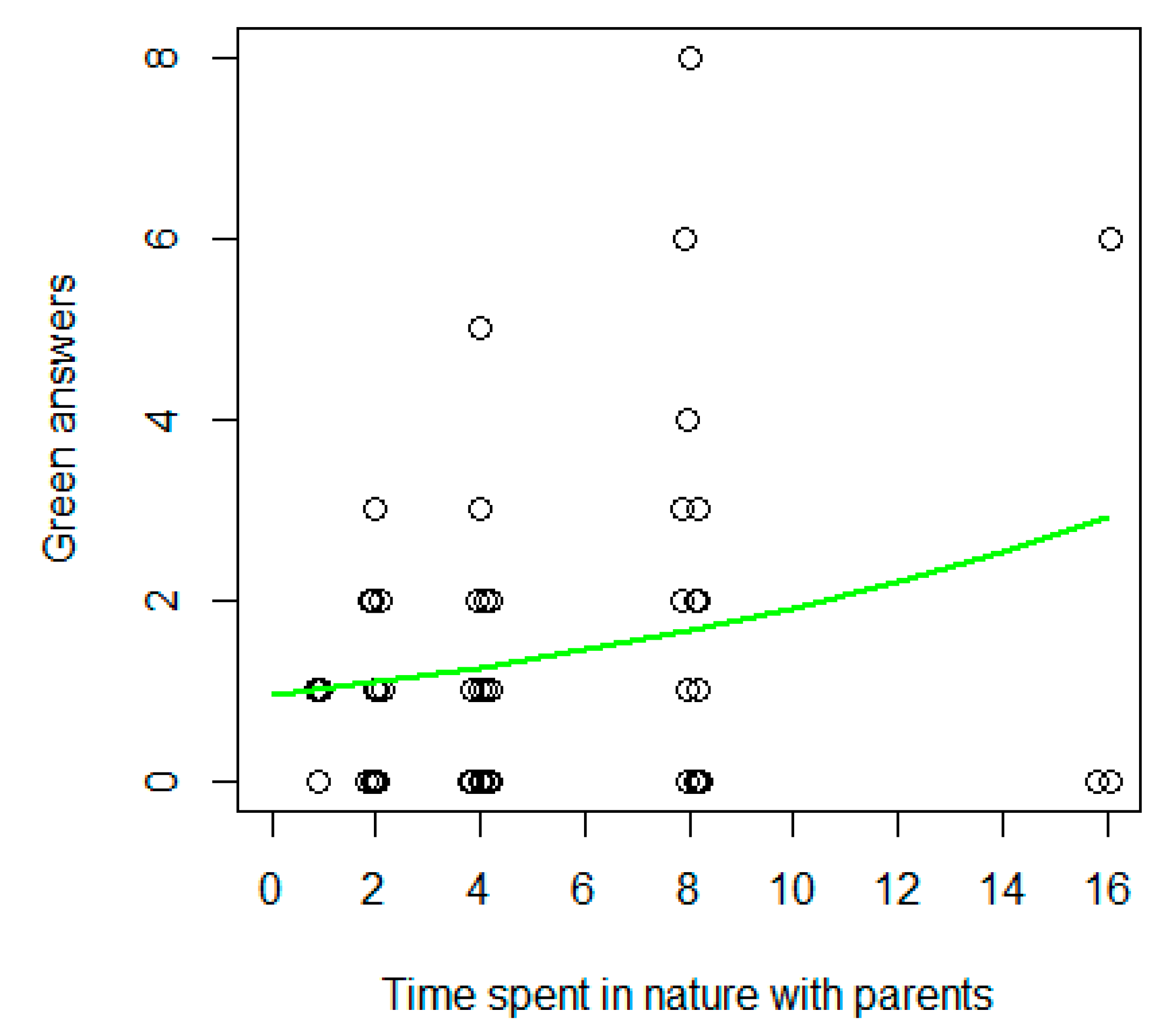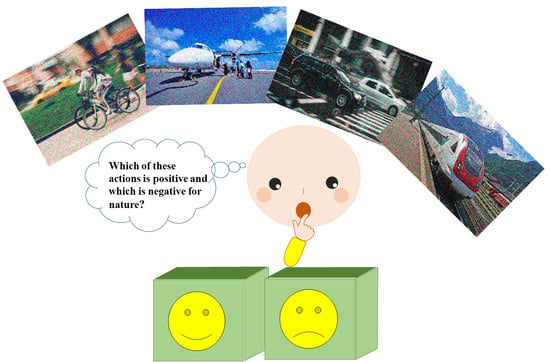2. Materials and Methods
2.1. Ethical Considerations
The study was approved by the Norwegian Center for Research Data. The kindergartens and children’s parents filled out written informed consent forms upon participation. Children’s participation was voluntary and could be discontinued at any time without providing a reason. All data were anonymized after the link between data from different sources was established.
2.2. Participants Recruitment
Between January and May 2019, 33 kindergartens from the same county in Norway (Trøndelag) were invited to participate in the study. Seven of these were “nature”, six were “farm”, and 20 were “normal” kindergartens. Of these 33 kindergartens, nine accepted the invitation (27%), seven declined (21%), and 17 did not respond (52%).
2.3. Participating Kindergartens
Among the nine participating kindergartens, three had a farm profile and the rest did not have any specific profile, but were eco-certified with a Green Flag. The main data collection resulted in 56 participating children between five and six years old who were in their final year of kindergarten (
Table 1). The number of participating children per kindergarten is shown in
Figure 1.
2.4. Pilot Study—Testing Interview Techniques on Four Children
In a pre-study, we tested the interview technique and duration and standardized our methods on four children, aged five to six years old at an eco-certified kindergarten, which was not included in the main dataset.
2.5. Semi-Structured Interviews of the Children
Data were collected from children by means of a semi-structured interview including both closed and open-ended questions and with the aid of pictures showing landscapes and actions. The actions were chosen because they could be performed and/or observed daily by the children in their close environment and are known to affect carbon dioxide emissions and environmental pollution in different ways [
33].
We interviewed the children individually and the interviews were audio-recorded upon permission being granted by both parents and children. Four children were interviewed in the presence of their teacher according to their own wishes. Each interview took about 15 min and was conducted in Norwegian. All interviews were carried out in June 2019.
2.6. Semi-Structured Interviews with Four Photos—What is Nature?
At the beginning of the interview, we showed children four pictures representing different Norwegian landscapes (
Figure 2). Two of them represented natural landscapes, one without people (
Figure 2a) and one depicting two children fishing in the mountains (
Figure 2b). The other two represented urban landscapes from the city of Trondheim: the view from Tyholt Tower (
Figure 2c) and the open-air bar and restaurant area called Solsiden (
Figure 2d).
We then asked the children to tell us which pictures they thought represented nature and why they thought so. This was done to introduce the term “nature”. We used the term “nature” (
natur in Norwegian) instead of “environment”, since previous research conducted in Sweden has shown that the word “environment” (
miljø in Norwegian,
miljö in Swedish) is unknown to most kindergarten children [
34], while they are more familiar with the term “nature”. Then we asked the children whether they considered humans as being part of nature.
2.7. Semi-Structured Interviews with Eight Photos—Environmental Impact
After exploring children’s ideas about nature, we showed them eight pictures in a random order representing different actions that have an environmental impact (
Figure 3). We chose actions that are part of our daily routine, that children could have observed while outside in nature, at home, or at the kindergarten. Four pictures showed actions that have a negative impact, due to the release of greenhouse gases in the atmosphere, resulting in climate warming (
Figure 3a–c); due to pollution (
Figure 3a,c,d); and due to a reduction in biodiversity or ecosystem services (
Figure 3b,d). These depicted a car driving, deforestation, people boarding an airplane, and a tractor releasing herbicides in the fields. Four pictures represented actions that have a positive impact on nature, because of reductions in the release of greenhouse gases and environmental pollution (
Figure 3e–h). These showed a compost bin with vegetable matter, children recycling materials, people riding a bike, and a railway. We then asked the children to put the pictures in either a box with a happy smiley or one with a sad smiley, according to whether they considered these actions as positive or negative for nature. After that, we collected the pictures and asked what they thought they showed and why they chose to put them in the “happy” or “sad” box.
2.8. Questionnaire to Kindergarten Staff and Parents
A questionnaire was given to one member of the staff from each kindergarten, collecting information about activities connected to the environmental component of sustainable development, frequency of being outside in nature, and frequency of discussing environmental challenges with children. Similarly, one questionnaire was given to the parents to collect information about parents’ education, frequency of being outside in nature, and frequency of discussing environmental challenges with children. For the questions about the frequency of discussing environmental challenges with children, we used a five-point Likert scale with the response options: never, seldom, sometimes, often, and very often. This variable was treated as ordinal (i.e., as an ordered factor). For the question about frequency of being outside in nature with children, we used the response options: once a month or less, 2–3 times a month, once a week, 2–3 times a week, and 4 times or more a week. This variable was treated as a continuous one, based on the underlying variable “number of times per month”, with values 0, 1, 2, 4, 8, 16.
2.9. Data Analysis
For each of the eight pictures showing actions with an impact on nature, we first noted the classification of the impact on nature given by the children as “positive”, “negative”, or “unsure”. We then wrote down the explanations that the children provided for their choice and classified them into four categories. If the children provided a correct environmental reason (e.g., “It is bad to fly with airplanes, because they release a lot of CO2”), we coded the answer in green. If they provided a practical reason (not connected to the environment, e.g., “It is good to fly with airplanes, because then you travel to warm places”), we coded the answer in blue. If they could not provide any reason or gave an explanation not based on logical thinking, we coded the answer in grey. If they gave a reason based on their feelings (e.g., “It is fun to fly”), we coded the answer in pink.
Based on this classification, we could assign to each child a different amount of green, blue, pink, and grey “points” ranging from one to eight.
2.10. Statistical Analyses
Analyses were done in R [
35]. We used a Pearson’s chi-square test to determine whether the proportions of children from farm and eco-certified kindergarten who thought that humans are part of nature were significantly different. The response variable “number of green answers per child” was not normally distributed (Shapiro–Wilk normality test = 0.77,
p < 0.001). We, therefore, explored the data distribution by plotting a histogram and observed that the number of green answers per child followed a Poisson distribution. We then fitted a generalized linear model (GLM) with a Poisson distribution to the data, to test whether kindergarten profile (profile), time spent out in nature (nature), parents’ education (education), and time spent discussing environmental issues with parents (discussion) associated with the number of green answers (green). The final model was selected by model reduction, starting from the model log (green) ~ profile + nature + education + discussion, where only explanatory variables with significance
p < 0.05 were retained in the model.
3. Results
The findings are presented and discussed under the following headings: “Children’s Ideas about What Nature Is and Whether We Humans Belong to It”, “Car Driving”, “Deforestation”, “Airplane”, “Tractor”, “Composting of Vegetables”, “Recycling”, “Bicycling”, “Railway”, “Parents’ Questionnaire”, “Kindergartens’ Questionnaire”, and “Overall Knowledge of Environmental Sustainability”.
3.1. Children’s Ideas about What Nature Is and Whether We Humans Belong to It
Children generally defined nature as including trees, animals, water, stones, and, eventually, humans. When asked which of the four landscapes showed nature, more than half (57%) of the children chose the two natural landscapes (the one with and the one without children, see
Figure 2a,b), whereas 38% of the children chose three pictures, including also one urban landscape (
Figure 2c,d). Five percent of the children were unsure about which pictures showed nature.
When asked why they chose urban landscapes, many of the children answered that it was because of the water visible in the landscape. When we asked whether they thought that humans belong to nature, 64% of the children answered that we do, 25% were unsure, and 11% answered that we do not. There was no significant difference between farm and eco-certified kindergartens in the proportion of children who thought that humans are part of nature (χ2 = 1.3719, df = 2, p = 0.50).
3.2. Car Driving
Fifty percent of children thought that car driving was positive for nature, 43% thought that car driving was negative, and seven percent did not know (
Figure 4). The ones who stated that driving a car was a positive action, reported as reasons “By driving a car we can avoid to bicycle or walk”, “Walking is boring”, and “By car we can move fast on the motorway”, whereas about 50% of the children could not explain the reason why car driving was positive. The children who thought that car driving was negative for nature reported as reasons that “airplane and car release gases”, “gases from cars make nature become even warmer and maybe it becomes a desert”, and “driving a car is not good because it damages the air”. Altogether, 40% of the children who thought that car driving was negative for nature provided an environmental explanation. Other explanations included that “cars damage the road”, “It is boring to sit in a car in the traffic jam and you could be late for a birthday party”, and “You may crash by driving a car”. Twenty-five percent could not explain why it was negative to drive a car.
3.3. Deforestation
Most of the children (75%) thought that logging the forest was negative for nature, whereas 18% thought it was positive. Seven percent did not know (
Figure 4). Many of the children said that the picture was sad. Even when the children said that logging the forest was good for nature, they reacted to the picture with exclamations of surprise and sad facial expressions. Fourteen percent of the children revealed their knowledge of the function of plants as primary producers by saying, “It is not good to cut trees because they clean the air for us” and “Trees allow us to breathe”. Nineteen percent of the children recognized the ecological role of trees in providing both food and shelter for animals and their reasoning was based on nature’s intrinsic value (biocentric). They said, “It is stupid to cut all the trees, because the birds can lose their homes”, “Cutting the trees is sad, there might be birdhouses there”, “Moose cannot find food, they eat grass and bark”, and “Squirrels cannot live in the trees”. One child provided all of these reasons and even mentioned that there are people living in the forest. The children who thought that logging of forests was positive reported mostly anthropocentric and practical reasons (coded in blue) such as, “By logging trees we can obtain wood and warm up houses” and “If we cut the trees we can see better”.
3.4. Airplane
Most of the children (68%) thought that flying by airplane was positive for nature. Twenty percent thought that flying by airplane was negative and twelve percent did not know (
Figure 4). Most of them provided reasons that were practical but not connected to nature, such as, “By plane I can visit other countries” or “If I fly I can go on holiday”. Very few children gave an explanation connected to the environment, such as, “If you fly you avoid driving on animals” and “It is good to fly because you don’t need to damage the trees” (possibly comparing flying with driving a car, where you have to cut the trees in order to build a road). Nine percent of the children thought that flying by airplane was negative for nature and gave an environmentally relevant explanation (coded in green) such as, “Flying is not good because airplanes release a lot of CO
2”. One child even noticed that the picture was showing a small plane, where only few people could go onboard and commented, “Aha! A private jet, that’s really bad for nature!”
3.5. Tractor
Most of the children (63%) thought that the tractor releasing pesticides in the fields was positive for nature (
Figure 4). None of them interpreted the cloud of gases in the picture as pesticides. Most of them thought that the tractor was watering crops and helped growing food. Twenty-four percent meant that the tractor was not good to nature, because “It is cutting the grass and then animals have no place to hide”, or because “It is releasing gases”. Only one child mentioned that the tractor was releasing poison into the environment. Thirteen percent did not know whether the tractor was good or bad for nature.
3.6. Composting of Vegetables
Very few children (5%) recognized a compost bin in the picture and could explain what composting is, although most of them thought that it was good for nature (64%,
Figure 4). The ones (13%) who thought that it was not positive for nature, said, “They are putting grass on the flowers and then they won’t grow up” and “Mum and dad can become mad at me if I touch the plants”. Twenty-three percent did not know whether composting was good or bad for nature.
3.7. Recycling
The vast majority (91%) of children thought that recycling materials was good for nature, because garbage is damaging nature (
Figure 4). Many also mentioned that animals could die if they eat garbage or could choke or starve if entangled in it.
Some of them reported reasons not connected to the environment, such as, “A car can crash if it drives on garbage” or “If we recycle we get money back”. Two children said, “Garbage is made of oil” and “Garbage does not belong to nature”, probably referring to the fact that plastic is not biodegradable. One child said, “It is good to collect garbage because it can be burnt”. Some had a more general explanation and said, “Recycling garbage is good because then the Earth does not die”. The few children who thought that recycling garbage was negative, could not provide a reason and possibly did not recognize the action showed in the picture.
3.8. Railway
The majority (61%) of the children thought that traveling by train was positive for nature (
Figure 4). However, the explanations for that were mostly practical. They said, “By train we can travel and see nature”, “By train we can move faster than on foot”, and “The train cannot crash, because nothing can drive in the same direction”. Nine percent of the children claimed that traveling by train is positive because “It is fun”. Very few reported reasons related to the environment, such as, “the train doesn’t use so much gases” and “electric train is good, because it doesn’t have so much CO
2 in it”. One child said that he liked to travel by train and visit his friend in Oslo. Since he did not know if traveling by train was better than driving a car, he asked whether trains release CO
2.
The children that thought that traveling by train was negative for nature (9%) said, “Trains can drive on animals” and “The train is polluting”. Twenty percent did not know whether it was positive or negative for nature.
3.9. Bicycling
The majority (61%) of the children thought that bicycling was positive for nature (
Figure 4). However, most of them provided practical reasons connected to human health, such as, “Bicycling is good, because we need training”, “When we bike we get fresh air”, and “It is good to bike because you become stronger”. Only three kids (5%) gave an explanation related to the environment: “Bicycling is good because then we don’t release CO
2”. Twelve percent thought that bicycling is fun. The rest could not explain why biking is good for nature.
Sixteen percent of the children answered that bicycling was not good for nature and reported as reasons that “People can abandon their bike in nature” and that “You can hurt yourself if you fall from the bike”. Thirteen percent did not know.
3.10. Parents’ Questionnaire
Most parents (65%) reported “sometimes” discussing environmental challenges with children, 14% discussed them “often”, and 18% discussed them “seldom”. Only about five percent discussed environmental challenges with their children “very often”.
The majority of the parents were outside in nature with their children “once a week” (34%) or “2–3 times a week” (29%), followed by “two-three times a month” (25%), “once a month or less” (7%), and “four times or more a week” (5%).
3.11. Kindergartens’ Questionnaire
Sixty-three percent of kindergartens reported being outside “once a week”. Twenty-five percent reported being outside in nature “two-three times a week” and 13% reported being outside in nature “four times or more a week”. Sixty-two percent of kindergartens reported discussing environmental challenges with children “sometimes”, whereas the rest (38%) discussed them “often”.
All kindergartens involved the children in activities aimed at encouraging environmental awareness such as collecting garbage in nature, recycling materials, reusing items, and saving water or energy.
3.12. Overall Knowledge of Environmental Sustainability
The model reduction identified one best model explaining variation in the overall number of green answers given by the children. This included only the intercept and time spent in nature with parents as explanatory variables (
Table 2,
Figure 5). Kindergarten profile, parents’ education, and time spent discussing environmental issues with parents were not retained in the model and appear, therefore, not to be associated with children’s knowledge about environmental sustainability.
4. Discussion
The majority of the interviewed children believed that they were part of nature. In fact, they chose the picture showing children fishing in the mountains as representative of nature and gave a positive answer when asked directly whether humans belong to nature. The proportion of children who thought that humans are not part of nature was similar to the one reported for American preschool children [
23]. However, more than one-third of the children included urban landscapes heavily impacted by humans among the pictures representative of nature. This might support the theory that a weakened childhood experience of nature in modern society might lead to not recognizing environmental degradation [
25]. On the other hand, the type of kindergarten (farm-based vs. normal) seemed not to associate with children’s idea of belonging to nature.
In accordance with the study of Cohen and Horm-Wingerd [
36], who examined ecological awareness among preschool children by means of pictures, the majority of the interviewed children were able to identify most of the graphically depicted ecological issues.
The picture showing a logged forest was among the ones that children indicated mostly as negative for nature. The children who said that forest logging was not good for nature recognized not only the utilitarian (anthropocentric) but also the intrinsic value of forests. Some children mentioned the fact that plants are primary producers and human beings can also live in the forest. Many expressed empathy for the animals who depend on the trees for food or shelter. Similarly, a study conducted on four and six-year-old children in England, Slovenia, and Greece [
37] reported several children mentioning the idea that trees provide oxygen or air when asked about what they thought would happen if the rainforest was logged. This is in contrast with an American study where 21% of children did not consider trees as being part of nature [
23]. According to Wilson [
38], one of the main aims of environmental education should be to foster a sense of respect for all living and nonliving elements of the natural world. In this respect, the environmental attitude of the children in our sample was not only based on “egoistic concern”, but also on a certain degree of “biospheric concern”, focusing on all living things [
39]. Almost one-fifth of the children addressed the ecological role of trees in providing food and shelter for animals and based their reasoning on nature’s intrinsic value (biocentric reasoning). Comparatively, previous studies on how school children value nature found a much higher use of anthropocentric vs. biocentric reasoning (roughly 95% vs. 5%) [
25,
27]. It is also important to mention that our questions did not have only one possible correct answer. For example, driving an electric car instead of a fossil fuel powered one can be positive for nature. Likewise, wood can be a sustainable energy source, if we harvest it at a lower rate than it regenerates. However, clear-cutting has a negative impact on nature, mainly because of habitat destruction (as correctly addressed by many of the children). Using wood to warm up the houses is indeed better than using fossil fuel. However, none of the interviewed children expressed such sophisticated knowledge about the impact of different energy sources.
Most of the children did not recognize the picture showing a compost bin. This is probably because only two of the kindergartens had a compost bin and the kindergartens’ staff did not involve the children when dumping food scraps and other biodegradable waste in it. Similarly, a study based on interviews of Norwegian kindergarten children found that only 15% of them knew the meaning of the word “compost” [
40].
Although children had variable knowledge about the impact of different actions on the environment, there was a consensus among them about the negative impact of garbage (especially plastic) on nature. This result emphasizes the importance of including children in taking action for sustainability. All kindergartens in our sample were engaged in recycling waste and collecting garbage from nature, both during their regular excursions and in specific cleaning actions conducted in spring. Therefore, children had direct experience with collecting garbage and often talked with the adults about it. While a reoccurring explanation was garbage persistence in the environment, leading to animal injury and death, none of the children mentioned that humans could also ingest microplastic through the food chain.
Children were also aware of the positive effects of biking on health, suggesting that training benefit is the most common explanation given by adults when proposing to bike rather than driving a car. Children in England [
41] and in Sweden [
34] reported similar benefits of biking related to health, fun, and zero emissions. The negative effect of car driving on air pollution and global warming was one of the environmental issues most addressed by the children. A Swedish study found a very similar proportion of preschool children who thought that car driving is negative for the environment [
34]. In contrast, a study from England found that children were not aware of the negative effect of cars on the environment before the age of ten [
41]. However, both an increased focus on CO
2 emissions in the last two decades and a stronger debate connected to the electrification of transport in Scandinavia might have had an effect on young children’s awareness. Another reason for this difference could be that both the Swedish [
42] and Norwegian [
32] Framework Plans for Kindergartens emphasize environmental issues in early childhood education.
Most children classified both traveling by airplane and by train as positive for nature, because they were associated with holidays, visiting friends, and exotic places. However, few children showed a very high degree of complex thinking, even taking into account the type of airplane and asking whether trains release CO2. Nevertheless, a railway might be both positive and negative for nature, depending on whether we consider the train as collective transport (therefore reducing CO2 release in the atmosphere) or whether we consider the negative impact of the railway on landscape and species connectivity. Whether the railways are electrified or not also affects their impact on nature.
When looking at different factors simultaneously, we detected a positive association between children’s knowledge of environmental sustainability issues and frequency of being outside in nature with parents. This is consistent with the results of a study where parents were reported by preschool children to be the major source of knowledge on the environmental impact of various transport modes in Sweden and the finding that playing in natural settings relates to skills that are linked to sustainability in children [
43].
Limitations of the Study
Parents and kindergartens’ staff self-reported time spent in nature and discussing with children, which might result in them answering in a socially desirable way. However, data were collected anonymously to reduce this potential problem.
When interviewing children, it is important to bear in mind that the ones who could not explain what the pictures were showing or why an action had a positive or negative effect on nature (grey answers) might have not felt confident being interviewed or might have been afraid of giving a “wrong” answer. It might also be that our choice of pictures did not allow them to recognize the action. Moreover, the picture showing the children fishing in the mountains (
Figure 2b) might have influenced the respondents, since other children were depicted engaging in a fun activity.
When classifying the actions as positive or negative, several children gave explanations not related to nature. They instead provided practical reasons or explanations related to their feelings of having fun or being bored. This might be due to the difficulty of focusing on the abstract concept of nature by such young children. The concept of nature is more complex and abstract than it seems and even scientists do not agree on one unique definition of nature [
44].
Moreover, the lack of association between kindergarten profile and children’s knowledge of environmental sustainability might depend on the little variation in time spent in nature and discussing environmental challenges by the kindergartens in our sample. We were, unfortunately, not able to include nature kindergartens in our sample, because none of the nature kindergartens invited to participate in the study accepted the invitation. Finally, only one parent per child filled out the questionnaire, so information on parents’ education might be incomplete. A larger sample size, and the inclusion of outdoor kindergartens in the sample, might have revealed associations with other factors.
5. Conclusions
This study shows that, by the time the children completed kindergarten, many had acquired an early understanding of the impact of different actions on environmental sustainability. The issues that children were most aware of were the importance of correctly disposing of garbage, the negative consequences of cutting the forest for birds and other animals, and the negative effect of cars on air pollution. We detected a positive association between knowledge of environmental sustainability and time spent in nature with parents, which emphasizes the importance of children spending time in nature with their parents.
Our understanding of five-year-old children’s knowledge of environmental sustainability remains limited. To achieve global environmental and sustainability education targets, we need further studies comparing more diverse situations, for example, along a wider urban–rural gradient, or across different countries, that can help identify which factors influence children’s knowledge and motivation to act for sustainability.
